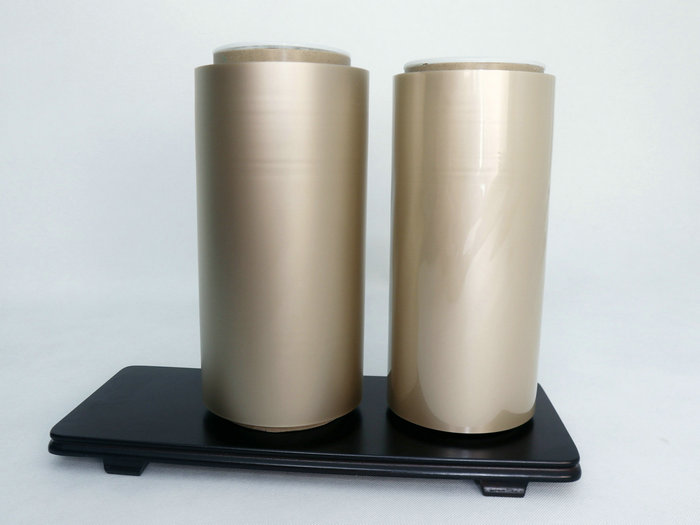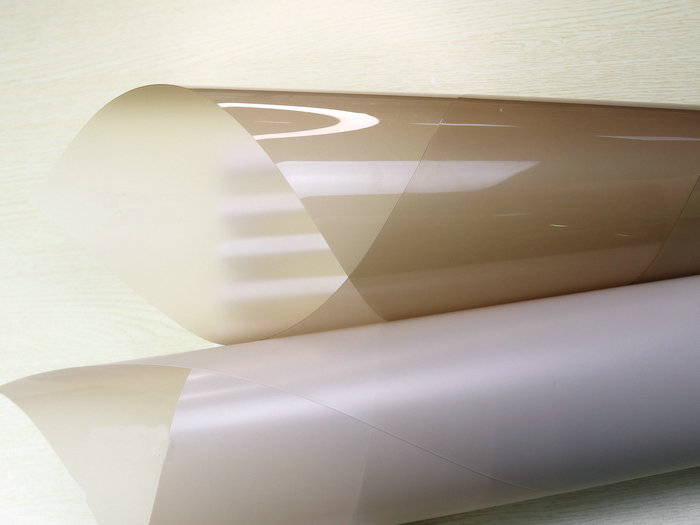
The diaphragm is the most critical component in sound quality. In this article, we take a closer look at Polyether ether ketone (PEEK) — a colorless organic thermoplastic polymer. PEEK is possibly the best of the thermoplastic resin films for their specification and application to microspeakers, soundbars, earphones, and headphones, and also from tweeters to the finest ribbon planar transducers.
Thermoplastic films, from polyethylene terephthalate (PET) to PEEK, can be formed when the temperature of the plastic reaches above its glass transition temperature (Tg), changing from a glassy to a rubbery state—becoming pliable and moldable. After forming to the net shape, the polymer film becomes glassy again upon cooling below Tg. The diaphragm material and shape are the most significant contributors to speaker sound quality.
The cost for extruded polymer films start at less than $4/lb. for PET (bottle plastic), which dominates most earphone and headphone diaphragm applications. This is the lower end of plastics and while it works, it is no match for better products. As PET (polyesters) requires higher weight than PEEK to achieve shape integrity, PET diaphragms have a lot of unnecessary additives.
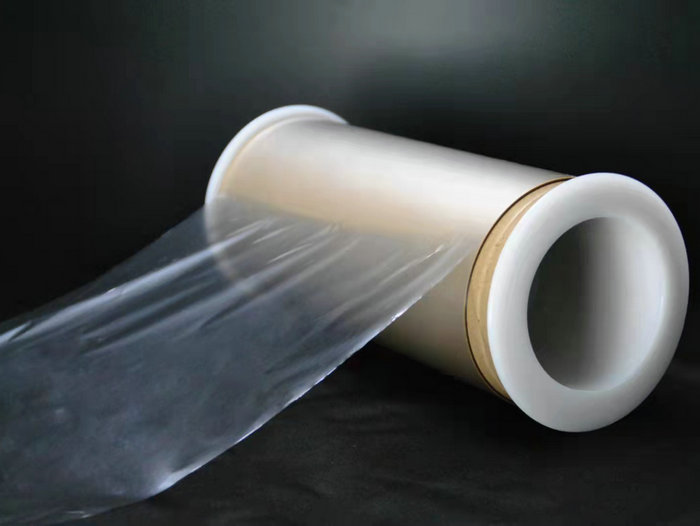
Early PEEK Applications
Early applications that were attracted to PEEK were ribbon planar transducer, Truextent’s beryllium compression driver edge suspensions and high-end tweeters. The dissimilar homogenous materials of the mineral-filled PEEK diaphragm provided both high damping but also a better acoustic signature match to the woofer.
The extremely thin gauges of Victrex APTIV DBX PEEK film series enabled use of multiple thicknesses with tailored damping layers to tune the speaker characteristics and tame diaphragm resonances.
Headphone diaphragms typically have a very shallow cross-section and in many cases a bit more depth would result in vastly improved performance. By far, most headphone drivers are one-piece diaphragms of PET polyester, about 25μm (1/thousandth inch) thick. The top of the line in film diaphragms is two layers of very thin PEEK film laminated to a damping layer. On the high-end headphone diaphragm market the flagships of Sennheiser (HD-800 and HD-820), Beyer (T1), and AKG (K701 and K702 Variomotion) all have laminated PEEK diaphragms. AKG’s dual-layer Varimotion diaphragms are also used in its studio dynamic microphones.
While PEEK has been used in the high-end markets for decades now, it has also become product of choice in mass-market applications used in more than 4 billion smartphones in the compliance and integral element of the diaphragm because of its essentially unlimited fatigue life and consistent extrusion thickness avoids rocking modes at elevated excursions.
Surprisingly, most of these microspeakers use not just PEEK but laminated PEEK, to dampen edge compliance resonance. With acceptance in the largest microspeaker market and the high-end headphone applications, other markets that should consider using PEEK include laptops/tablets, car audio, TVs/soundbars, smart speakers, headphones, and true wireless earbuds.
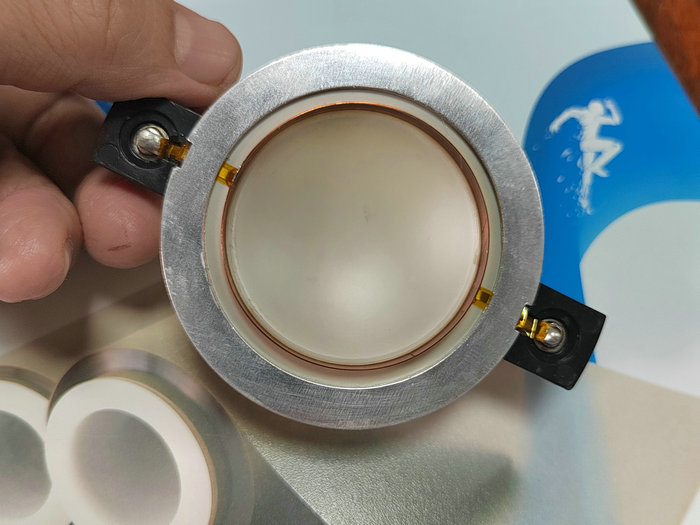
Future Uses
A number of soundbar brands and their OEM vendors are in the design stages of exploring thicker PEEK diaphragms (10 mil and thicker) for compact full-range drivers that avoid the performance compromises of crossovers and tweeters. The formability of film diaphragms with effective decoupling and controlled effective radiating area vs. frequency enables smooth power response as well as linear and extended frequency response. Damping can be dialed in through mineral-filled content (Mineral fill – APTIV 1103) and/or PEEK laminates with constrained layer thermoplastic elastomer (TPE) or acrylic.
Precision Extrusion Uniformity
We have discussed earphone and headphone diaphragms, which are typically under 1 mil inch (25μm) gauge, and we now explore some applications that require thicker films. Compression drivers with 1.75” diameter diaphragms and up are more likely to be 2 mil and over, while there are 3.5” diameter auto-sound speakers of 10 mil. Conversely, on the thinner side, earphones are in the range of 12μm or less.
These finer gauges require precision extrusion processing, slower processing speeds, and skill. To be blunt, the film extruders in the US do not want to do business with the speaker industry and the feeling is mutual. One issue is that the toll extruders (processors for a fee) that take on all films are paid for tonnage, not quality—and are therefore not experts in the field.
The characteristics and tight extrusion process for higher performance materials is not just about superior consistency. Other performance goals are conferred by the symbiotic relationship of more uniform thinner gauge films of higher mechanical performance resulting in higher sensitivity, higher acoustic output with lower distortion, and less rocking. While typical cone speakers count on their two-point spider suspension to maintain coil centering and control rocking, in earphones, headphones, tweeters, and compression drivers, it is edge compliance that keeps things under control. Extruders processing premium engineering plastics use higher-grade machinery and far slower speeds.
Each resin type varies in brittleness and ductility, and many extrusion settings are best left optimized. The ultimate quality films are extruded in-house by the resin formulators (e.g., the in-house extrusion processing at Teijin in Japan for its Teonex or Victrex in the UK with APTIV). When you pack your own parachute, you take care. Thinner films of higher-grade resins are expensive — and cost per pound goes up drastically even through the lower material (resin) costs per part as the extrusion process is slower.
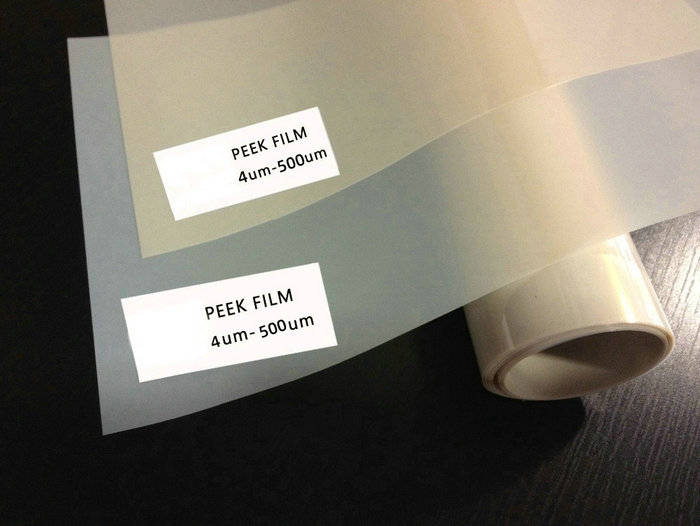
In Conclusion
While the cost of the PEEK diaphragm is slightly higher, there is no other component upgrade that can provide more sensitivity, extended response and cleaner sound for pocket change. It is common to find TWS 6mm earphone diaphragms with 9μm PET diaphragms and while sensitivity is high, so is distortion, and sound quality gets nasty at elevated levels while the PEEK diaphragm sounds and measures far better.
With a thickness tolerance of ±5%, ARKPEEK film has enabled more uniform thickness, resulting in greater part-to-part consistency, lower F0 and total harmonic distortion (THD) variability. Reducing the variance in film thickness increases diaphragm forming yield, lowers overall manufacturing costs by scrap, and is performed to meet production ramps.
Another not so obvious benefit of thinner precision film surrounds is the higher compliance and so the back air chamber volume can be shrunk, there because this air suspension contributes most of the diaphragm’s spring restoring force rather than the surround—enabling tighter production tolerances. Alternatively, liquid silicon rubber (LSR) has been intermittently used for the higher compliance but the LSR process seems to be out of the comfort zone of most of the manufacturers, and requires high tooling costs.
The diaphragm will always be the shortest path to clean sound, wider response, higher sensitivity, and tighter production tolerances. For the speaker market extremes, laminated PEEK dominates the dynamic headphone market, and also the microspeaker industry. With a number of soundbar engineering teams developing crossover-less solutions, the middle of the market is next.
